Backlit Glass Panels Form A Glowing Feature Wall in Lancaster: A Brief Case Study
Bringing together fine art photographs of natural grasses, custom bent glass, and LED backlighting can be difficult – throw in a curved shape with a narrow lighting cavity and the stage was set for this example of custom integration at the lobby of Lancaster General Health Women and Babies Hospital.
Architects Noelker and Hull wanted to bring soothing natural elements to the entrance lobby of this hospital in Lancaster, PA. Artist Henry Domke’s fine art images were commissioned, and Skyline Design fabricated the prints onto bent glass panels. The designers knew they wanted to showcase these artistic glass panels with seamless backlighting.
1. Design Intent
Rendering of initial design concept for the space
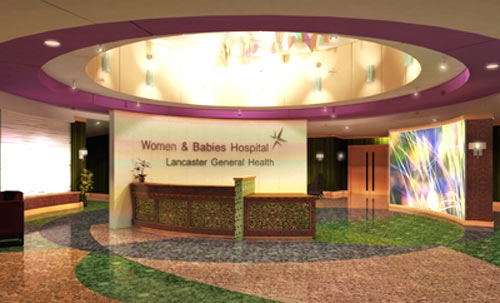
2. Surface
Skyline Design printed Henry Domke’s specified image onto optically clear film, which was then applied to the back side of Skyline’s bent glass panels.
3. Lighting
GPI analyzed the printed glass surface to calibrate the ideal diffusing method and lighting cavity.
Below left: glass in direct contact with LED panel, without diffusers
Below right: specialty diffuser between glass and LED panel plus small air cavity to increase light diffusion
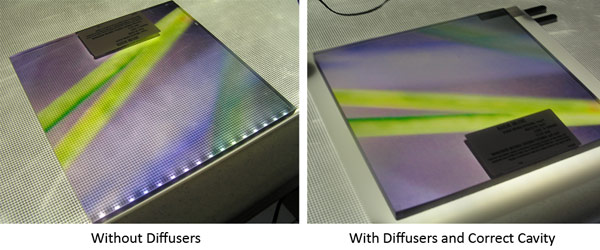
4. Structure
Section detail showing the overall assembly – glass was run in channels on the floor and ceiling

5. Detailing
All wire exits were detailed in a staggered arrangement to avoid extensive gaps between panels.
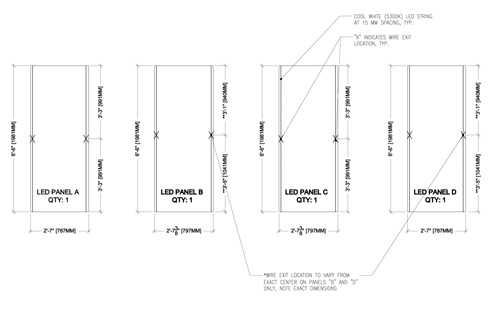
6. The Result
Photographs of seamlessly illuminated dramatic glass feature wall (and see more in our portfolio)
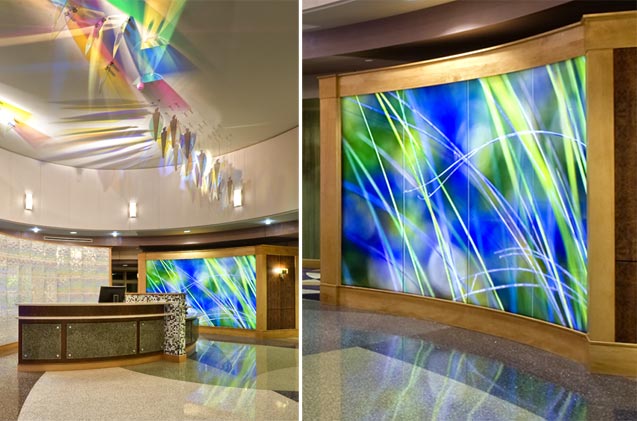
—> Here’s what we learned from working through this project. Keep these tips in mind when designing illuminated glass feature walls:
- Make sure that your glass supplier and lighting supplier maintain direct communication so that each company can calibrate their product based on the given set of parameters.
- Don’t skimp on physical mock-ups. Because flat LED panels emit varying brightness based on the panel sizes, each job must be analyzed individually in order to determine the ideal LED panel size, lighting cavity and proper diffusers.
- Seams between flat LED panels are the most susceptible area. Hot spots can occur when two LED strings are placed back-to-back. Seams can also create shadows if wire exits create large gaps that push the panels apart.
- Printed glass can be highly translucent, with great risk of hot and cold spots appearing on the surface (regardless of what type of lighting you use). Check with your glass manufacturer to see if they can treat the back surface of the glass with texture or diffusion layers – or make sure your lighting manufacturer can provide the appropriate diffusing panels.
Interested to see more details of backlit feature walls? Download our case studies from other backlit projects >
